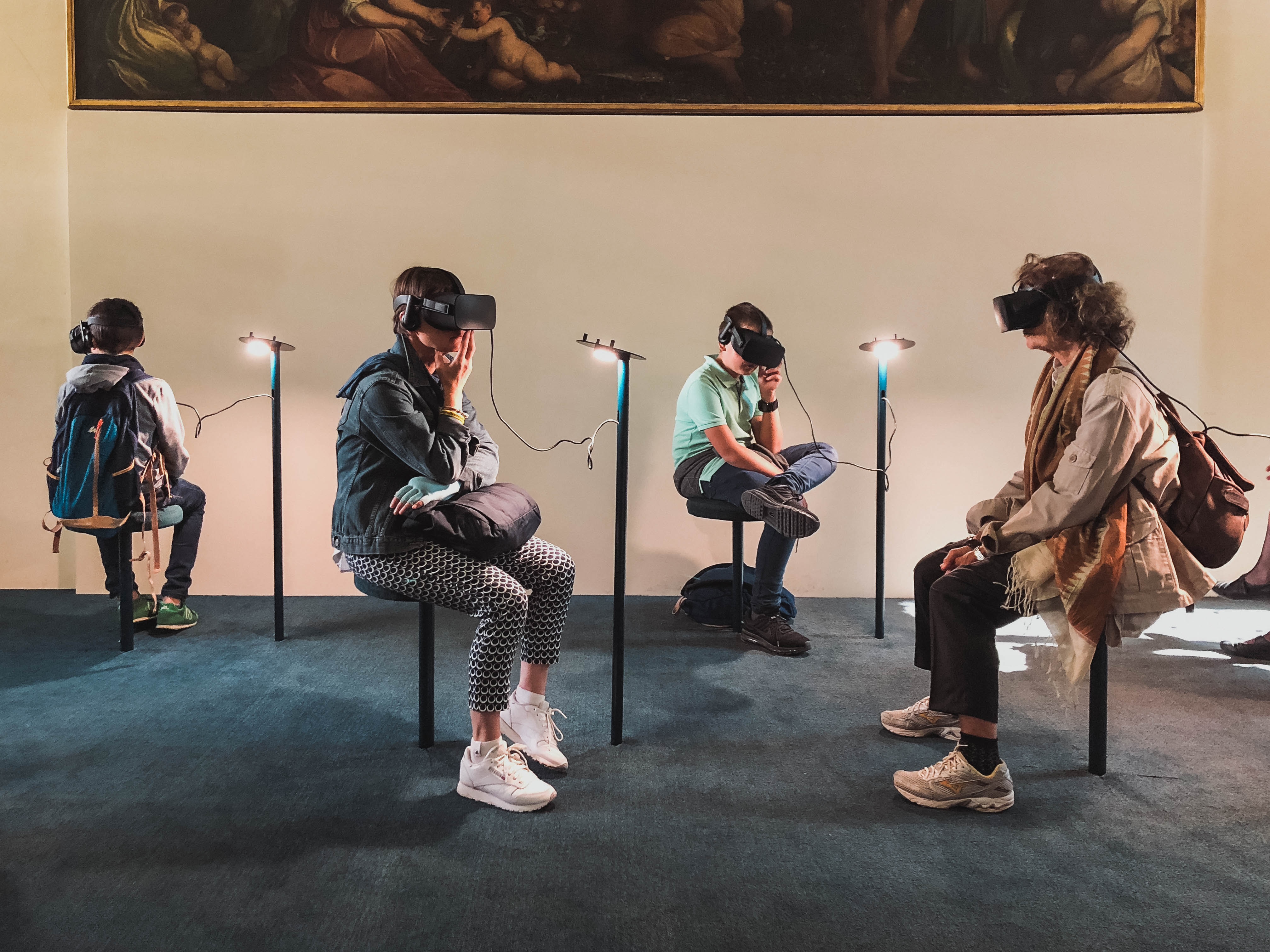Special anti-COVID deal valid until the 9 of January 2026
REQUEST
Virtual Reality (VR) for Escape Rooms
Posted originally on Buzzshot
Virtual Reality (VR) for escape rooms is where electronic gaming and escape room puzzles meet.
This is a growing area of business for escape rooms, incorporating virtual worlds that can be comprised of basically anything within the limits of the game designer’s imagination.
Players are immersed in the game experience via VR headsets and controllers. From the perspective of an escape room owner, virtual reality offers the opportunity for virtually unlimited themes with relatively low overhead.
Mustapha Omar, founder of Connect-VR and formerly commercial director of Escape Hunt PLC (an Escape Room company listed on the London stock market). Says
"VR Escape games are gaining traction and I expect 2020 to be a breakout year"
Here’s how VR works for escape rooms:
How does virtual reality work for escape rooms?
When you look at a regular escape room, it’s full of physical objects and puzzles that players interact with directly. A virtual reality room works in exactly the same way, except that those riddles and clues are all contained within a virtual experience.
As the rooms are based in a virtual world, they can consist of concepts that are more difficult in a “reality” escape room. For example, players could be in a realistic version of space or at the bottom of the sea. Like the gaming world, they could face ghosts, monsters, aliens or virtually anything the mind can conceive.
Escape rooms are fundamentally about solving puzzles or riddles and finding clues as a team that will unlock the door for escape. In fact, that team aspect is often one of the most valued parts - people enjoy the social interaction and it’s something that many corporate clients are looking for too.
For this reason, a question that many escape room owners and players ask is, does that social aspect remain with virtual reality games? The answer is that yes, it can. Players can see each other’s “Avatars” within the virtual world and can even interact right down to passing each other virtual objects. Teamwork and player communication is just as important in a VR-based escape room, it’s not a solitary experience!
Virtual reality escape rooms retain the need and benefits of teamwork
Benefits of virtual reality escape rooms
Escape rooms have become increasingly popular over the last few years, and with that popularity comes the reality of more competition for business owners. A big part of what keeps players coming back is that they have a great experience, which for owners means keeping it interesting and regularly changing rooms around.
When your room is a physical experience, that means new props, new riddles, money spent on redesigning or refurbishing and, of course, time with a room unavailable as it is being created. All of this can cost a lot of money. Virtual reality rooms don’t need this lengthy, expensive process to be changed. You just need an empty room.
The virtual reality experience is created via VR headsets (such as the HTC Vive Pro), controllers and powerful control PCs (usually one per player plus a central one). Changing rooms is as simple as changing the game that is being played via the headset. This means that escape rooms could have an entire library of virtual games for their players to choose from, all without a single prop change or renovation.
For escape room owners, this could even provide you with a point of difference from your competition. Perhaps you have a much broader range of rooms available because you have a few offered via VR.
Other benefits of VR escape rooms include:
- They can be highly profitable with low overheads. Many escape rooms with VR are charging more for it and customers seem willing to pay. For example, a quick survey of VR escape rooms in the UK reveals they are charging up to £30 per person per hour, while US rooms are charging up to $40 per person, per hour.
- VR can give you a lot of flexibility. For example, one room can be used for any number of different escape experiences.
- You can broaden your customer base easily, just by offering games targeted at different audiences.
- You may not need a game master to provide hints or clues. Many developers build this functionality into the software.
- They can be efficient in terms of space, meaning you can make more profit per square meter at your business. For example, there are gaming solutions that offer six-player versions, requiring only 25 square meters of space.
What equipment is needed to set up VR?
We’ve already given the basics - the empty room, the headsets and the controllers - however, of course, you will also need the gaming software to go with them.
This is where your investment can get expensive. You need software that provides an amazing, immersive gaming experience and for that, you need a great developer. VR software developers should be experienced with escape room games specifically and understand what makes them successful. Typically, having your own game concept developed can be done, but is very expensive, so most escape rooms will look to other options.
Another option is to go through a company that has been set up to provide escape rooms with VR games. These usually work by issuing you a license to operate specific games, or offering a sort of membership deal, where you pay a monthly rate for access to games. Some even offer “pay per play” games. For example, Connect-VR is a UK-based company that supplies and installs turn-key VR games and equipment from their content partners. As part of their services they also offer VR equipment at discounted prices and finance packages to purchase the equipment.
Another game provider to check out is Ubisoft. They develop the games and have a strong reputation for quality, immersive experiences. Exit VR (with their popular free-roam game Huxely), ARVI and Avatarico are also worth checking out.
One thing to remember here is that you should aim to offer something unique. Your players are looking for a different experience to what they might otherwise get in reality, or even on a home VR setup. Make the most of the VR - why would they choose to go with it over playing a regular room? For example, perhaps different scenes and settings that they can’t experience in reality are appealing.
Types of VR escape games
There is more than one type of VR that can be used for escape room games - here’s a quick run-down:
- Seated VR. As it sounds, players are seated to participate in the game. These types of games tend to be the most space-efficient for escape room owners. ROTO VR provides special chairs which turn towards whatever the players looks at. This type of VR can be good to have in your lobby as a taster for other VR experiences.
- Teleport VR. In this sort of VR, players are usually standing in a small area (maybe 2x2 meters). They can make small movements within the game world by simply walking but to go any further they use a “teleport” function. This type of VR can use the cheaper wired headsets and uses less space than Free-roam VR.
- Free-roam VR. This uses wireless VR headsets in larger play areas. Players can move within the virtual environment by simply walking. Care must be taken to ensure the play areas are free from obstructions that might present a tripping hazzard.

What business model do VR game providers support?
There are a few different suppliers of VR games for escape rooms - here are the most common business models for these:
- Upfront licensing fees, where you pay a sum to license the game for a period of time. (Avatarico is among the game providers that offer this). This approach was common a year or so ago and is now falling out of favour.
- Fixed fee per play (Ubisoft and Exit VR offer this option). You pay a fixed amount each time the game is played. This is good as it means there isn’t a large initial fee to pay the content provider and if a game proves to be unpopular you can easily switch to another.
- Revenue share (ARVI offers this). This is where you pay a percentage of what you charge your players to play the game. Mustapha Omar of Connect-VR says "We find Escape Room owners prefer to pay a percentage of revenue as this allows them to adjust their prices to market conditions."
Free download: VR escape room solution providers
Final thoughts
Virtual reality is a growing trend for escape room businesses. Using VR opens up the possibility for flexibility in how you use the space you have available - you can have different games in the same space, or even target different audiences without having to physically change the room.
A key to success with VR is basically the same as any physical room - people must have a good time! This means that rooms should be interesting, challenging and immersive.
contact us
Are you interested in finding out more about our games? Fill in the form and we'll be in touch!
Thank you for your interest!
Our managers will call you as soon as possible.